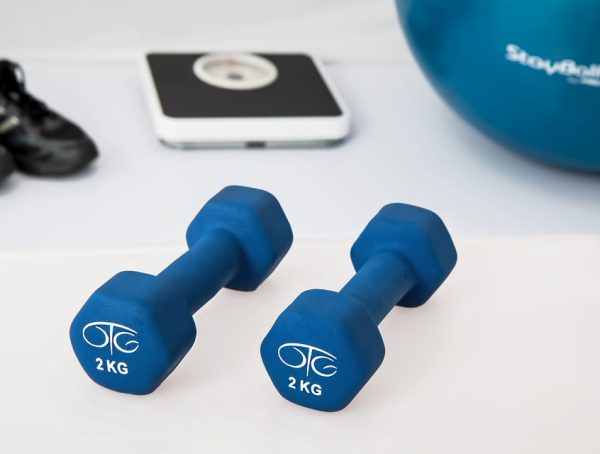As we age, it becomes increasingly important to maintain our physical health and well-being. Exercise plays a crucial role in this, but our bodies may not respond to workouts the same way they did in our younger years. That’s why revamping your workout routine at 50 is essential for achieving your fitness goals and staying active. Here are some tips and exercises to help you get started, along with actionable steps to help you stay on track.
Tip #1: Set Realistic Goals
Before you start revamping your workout routine at 50, it’s essential to set realistic goals. Review your current fitness level and decide what you want to achieve. Do you want to increase strength, flexibility, or cardio endurance? Or is it a combination of all?
Once you’ve determined your goals, break them down into achievable steps. If your goal is to run a marathon, start with a 5K, and gradually work your way up to longer distances. The key is to create a plan that is challenging but achievable.
Action Steps:
1. Write down your fitness goals and review them regularly.
2. Create a specific workout plan that aligns with your goals.
3. Celebrate milestones and progress.
Tip #2: Duration Matters
The duration of your workout is important, especially as you age. A longer workout isn’t always better. In fact, it could lead to injury or burnout. Shorter, high-intensity workouts can be just as effective in achieving your goals. However, the key is to ensure that you are consistently challenging yourself during those workouts.
If you prefer a longer workout, aim for at least 30 minutes of moderate-intensity exercise (like brisk walking, cycling, or swimming) most days of the week.
Action Steps:
1. Mix up the duration and intensity of your workouts for optimal results.
2. Listen to your body and rest when necessary.
3. Incorporate mindfulness practices like yoga or meditation to help manage stress and promote overall well-being.
Tip #3: Resistance Training is Essential
As we age, muscle mass and bone density decline, making us more susceptible to injuries and falls. Resistance training (also known as strength training) can help build and maintain muscle mass and improve bone density. You don’t have to become a bodybuilder to benefit from resistance training. Simple exercises like squats, lunges, and push-ups can make a big difference.
Start with at least two strength training sessions per week, focusing on all major muscle groups.
Action Steps:
1. Incorporate resistance bands or weights into your workouts.
2. Ensure proper form and technique to avoid injury.
3. Gradually increase weight and resistance for continued progress.
Tip #4: Cardiovascular Exercise is Key
Cardiovascular exercise (often referred to as “cardio”) is essential for maintaining heart health and improving cardiovascular endurance. Walking, cycling, swimming, and dancing are great options for cardio exercise. These activities can help reduce the risk of chronic diseases such as heart disease, diabetes, and stroke.
Aim for at least 150 minutes of moderate-intensity or 75 minutes of vigorous-intensity cardio exercise per week.
Action Steps:
1. Find an enjoyable cardiovascular activity that fits your lifestyle.
2. Mix up your cardio routine with different activities to keep it interesting.
3. Monitor heart rate and adjust intensity as necessary.
Revamping Your Workout Routine at 50: Exercises to Consider
While the above tips and actions steps provide a solid foundation for revamping your workout routine, it is important to understand which exercises can help you achieve your fitness goals.
1. Planks – This exercise is primarily a core exercise that works your erector spinae, rectus abdominis, and transverse abdominis muscles. It can help improve posture, reduce the risk of back pain, and improve balance.
2. Squats – Squats work your entire lower body, including your quadriceps, hamstrings, glutes, and calves. They can help improve mobility, burn calories, and enhance athletic performance.
3. Push-ups – Push-ups work multiple muscle groups, including your chest, shoulders, triceps, and core. They can help increase upper body strength, improve posture, and tone muscle.
4. Burpees – The ultimate full-body exercise, burpees engage your legs, core, and upper body. They help improve cardiovascular fitness, increase strength, and burn calories.
Final Quote:
“Physical fitness is not only one of the most important keys to a healthy body, but it is also the basis of dynamic and creative intellectual activity.” – John F. Kennedy
Revamping your workout routine at 50 doesn’t have to be daunting. By setting realistic goals, choosing exercises that are appropriate for your age, and gradually increasing the intensity of your workouts, you can stay healthy, active, and inspired. Remember to celebrate your progress and be kind to your body as you embark on your fitness journey. And, if you’re interested in trying CBD to help with post-workout recovery, visit 1pureCBD.com for premium quality products.
You might also like
More from Health and Fitness Tips and Advise for people 50+
RJ Mahvash Lavishes Praise On Yuzvendra Chahal Amid Dating Rumours, Calls Punjab Kings Player ‘Great, Most Caring Person’
Yuzvendra Chahal and RJ Mahvash have been rumoured to be dating shortly after the cricketer's divorce was finalised with …
Is being good with pets a green flag? Relationship expert shares how this may be the new love language
When you are on a dating app and swiping through profiles, have you come across one that …
Stebin Ben shuts down dating rumours with Nupur Sanon, says their bond is purely platonic: ‘Yes, I am single’ | Hindi Movie News
Singer Stebin Ben has officially addressed long-standing speculation about his relationship with Nupur Sanon, and fans hoping …

































